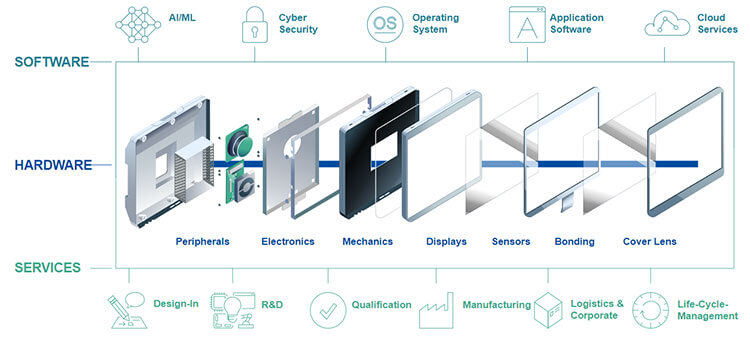Writer: adminRelease Time: 2024-11-13 08:49Browse: 607
Choosing the right TFT LCD display requires a combination of factors to ensure that the selected screen can meet specific application needs and performance requirements. Here are some key steps and considerations:
Usage environment: Determine the environment in which the display will be used, such as indoors, outdoors, in strong light environments or dim environments. This will directly affect the requirements for characteristics such as brightness, contrast, and anti-glare.
Display content: Understand the type of content that needs to be displayed, such as text, images, videos, etc. This will help determine the required resolution, color performance, and response time.
Interaction requirements: If the device requires touch screen functionality, consider the type of touch screen (such as capacitive, resistive, etc.) and sensitivity.
Screen size: Choose the appropriate screen size based on application requirements. For example, for portable devices, a smaller screen size may be more appropriate; for large display devices, a larger screen size is required.
Resolution: Resolution determines the clarity and detail of the image. Choose the appropriate resolution to ensure that the image can be displayed clearly and accurately. For high-resolution applications, such as 4K video or fine images, you need to choose a display with a higher resolution.
Brightness and contrast: Choose appropriate brightness and contrast according to the use environment. In strong light environments, higher brightness is required to ensure that the image is clearly visible; in dim environments, more emphasis is placed on contrast performance.
Color performance: Choose a display with a wide color gamut and high color saturation to present more realistic and vivid images.
Response time: For applications that require fast response, such as games or video playback, choose a display with a short response time to reduce motion blur and afterimages.
Additional features: Consider whether additional features are needed, such as touch screen, anti-glare coating, HDR technology, etc. according to needs. These features can enhance user experience and display effects.
Compatibility: Ensure that the selected display is compatible with existing systems or devices, including parameters such as interface type, drive mode, and power supply voltage.
User reviews: Check user reviews to understand the actual performance and user satisfaction of the product. This helps to discover potential problems and understand the advantages and disadvantages of the product.
Cost-effectiveness: Consider the performance, quality, price and other factors of the product comprehensively, and choose the product with the best cost-effectiveness. While pursuing performance, cost control and budget constraints must also be considered.
Sample testing: Before deciding to purchase, it is best to contact the supplier or manufacturer to obtain samples for testing. Actual testing is used to verify whether the performance and quality of the display meet expectations.
Long-term testing: For critical applications or equipment that needs to run for a long time, long-term testing can be considered to evaluate the stability and reliability of the display.
In summary, choosing the right TFT LCD display requires comprehensive consideration of multiple factors, and weighing and selecting according to specific application needs and performance requirements. Through a scientific and reasonable purchase strategy, it can be ensured that the selected screen can meet specific application needs and provide high-quality display effects and user experience.

